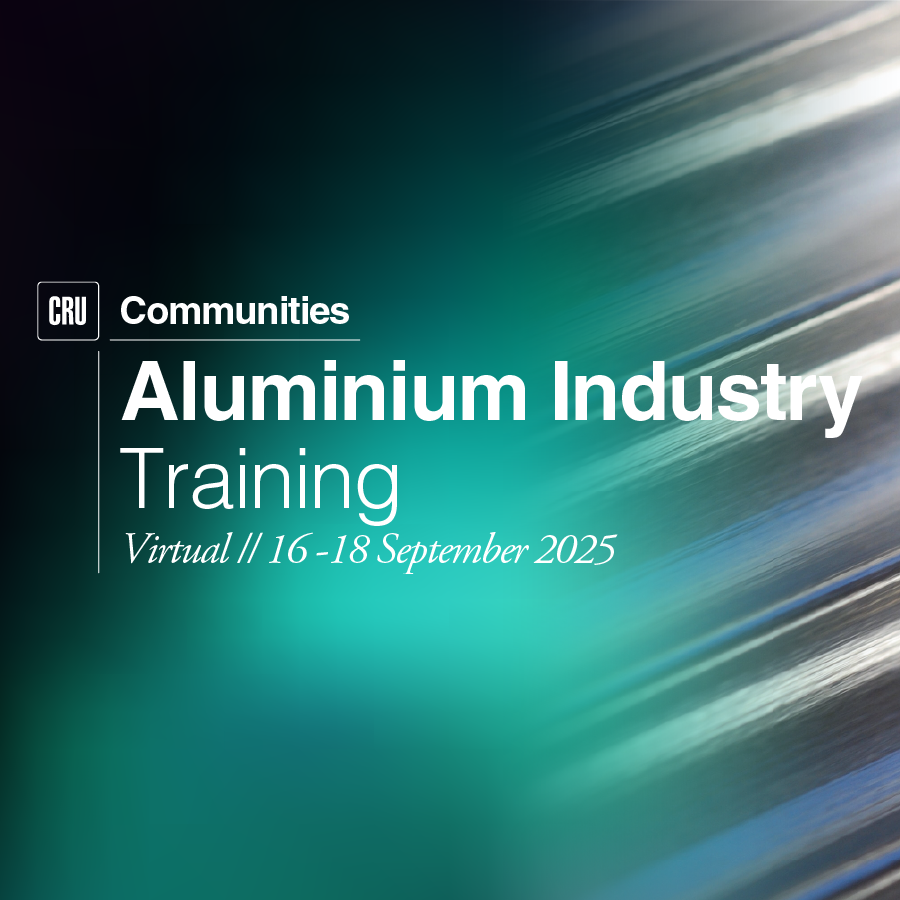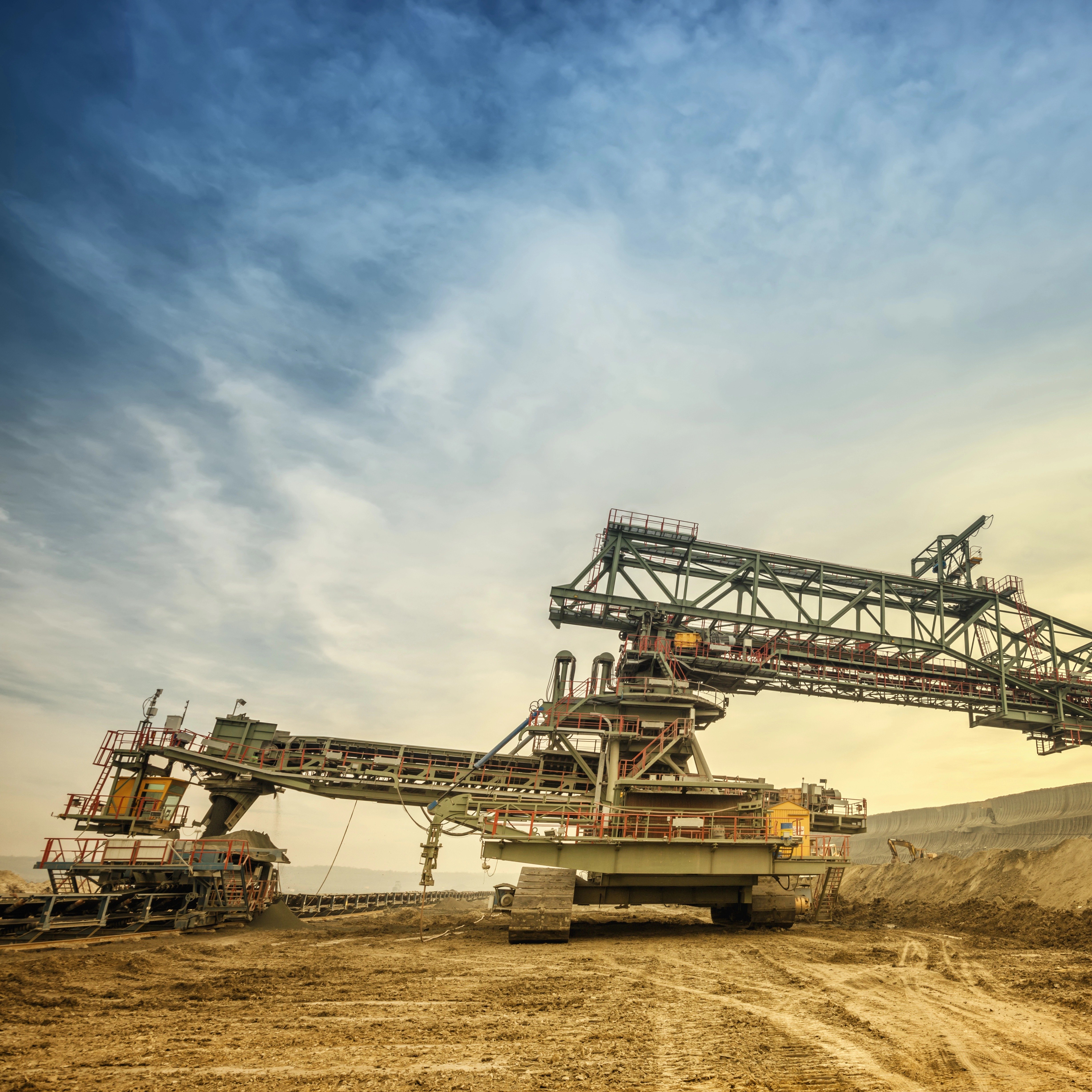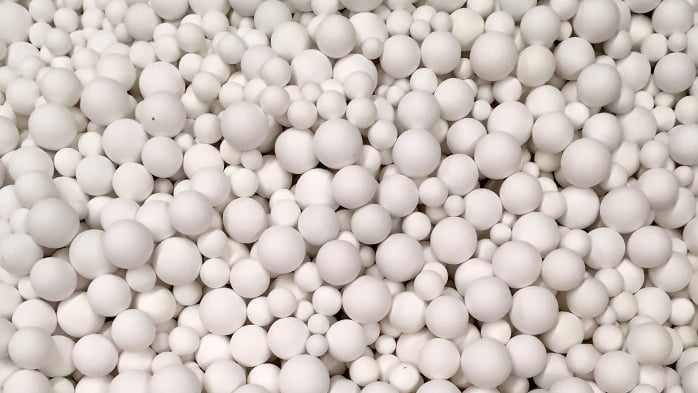CRU recently conducted a market survey of Chinese purchasers for the little-known commodity ‘high purity alumina’ (HPA) and spoke with consumers in the LED and coated battery separator markets. What we encountered was a surprising lack of enthusiasm, from consumers who saw no threat to their existing domestic supply chains. Here we examine the drivers for an extraordinary HPA demand growth story, and why end users should be scrambling for new supply.
In many senses, the Chinese market’s nonchalance towards new projects and overseas supply is entirely justified. In 2016, global supply of HPA was in a healthy surplus above its 33,500 tonne demand – and some 70% of this supply could be domestically sourced in China. Competition among Chinese HPA producers, particularly at the low-grade level, was incredibly fierce and led to considerable price reductions. The most notable overseas suppliers – Sumitomo, Sasol, Baikowski and Nippon Light Metal – were well-established and well-known entities. Why then should a Chinese consumer of HPA, whether it be a producer of sapphire substrates for the LED industry or HPA-coatings for the lithium-ion battery separator market, be interested in hearing from unknown, foreign HPA projects?
A potential step change in costs is coming – the kaolin route versus traditional aluminium-based
Conventionally, HPA is produced via routes such as the aluminium alkoxide process, a modified-Bayer process using sodium hydroxide, or the choline hydrolysis process. The former of these aforementioned processes is employed by a number of the leading global HPA producers that offer products with relatively lower trace element concentrations. In most cases, the feedstock material for the product of HPA is high-purity aluminium powder – an energy-intensive commodity to produce. The duplication of efforts – first to produce the pure metal, then the pure oxide – makes the process inefficient from an energy intensity perspective.
Meanwhile, Nippon Light Metal (NLM) in Japan is using alumina hydrate to produce HPA, thought to be purchased from Norsk Hydro’s Alunorte alumina refinery in Brazil; as an aside that further weighs on the market balance for HPA, Norsk Hydro is, at the the time of writing, battling mandated 50% production cuts due to safety concerns following a period of heavy rainfall . The prices of wet alumina hydrate for contracts signed in 4th quarter 2017 were of the order of $230-260 per tonne ex works, which is equivalent to about $370-400 per tonne on an alumina content basis. Conversion of hydrate to oxide involves the loss of about 35% by weight of water of crystallisation, meaning three tonnes of hydrate gives around two tonnes of product. CRU understands that Nippon Light Metal has a total production cost of less than US $10,000 per tonne at present.
Due to their duplication of efforts, these conventional HPA production processes, although well-proven at a commercial scale, are naturally higher cost than the proposed routes being pursued by a number of newer producers, such as Altech, FYI Resources and Hill End Gold – all of which use an aluminous clay called kaolin as their feedstock. This kaolin ore undergoes calcining, milling, acid leaching, crystallisation and finally micronisation to form a fine HPA powder. Altech were the first to propose this route and the most advanced proponent; their final investment decision study employed a number of highly conservative contingencies and still calculated production costs of US $9.90/kg . Hill End has recently (14th June 2018) published its Pre-feasibility Study on the ASX , claiming an average cash cost of production of just US $7,668 per tonne of 99.99% HPA (the most common HPA purity) and citing a “simple process flowsheet, rapid chemical reactions, moderate acid strengths and temperatures” as drivers of the low opex cost. Another advantage of the mined feedstock route is that it renders the companies insulated to aluminium price fluctuations, since their feedstock is procured at cost-of-production; and the companies enjoy a greater security of supply, as feedstock is not reliant on third-party sourcing.
If all of these HPA projects were to come online (CRU is currently tracking seven known greenfield projects), they would bring an additional 14,450 tonnes per annum of HPA to market by 2023; and if their production processes can be proven at scale, this volume will sit entirely in the first and second quartiles of the cost curve.
Meanwhile, the cost outlook for Chinese producers does not look promising. The primary drivers of Chinese HPA production cost are raw materials, energy and, increasingly, environmental regulations. Starting in 2017, the Chinese government has undertaken an extensive programme of environmental inspections across a broad range of industries, particularly those that are energy-intensive. Compliance with these new environmental measures has added to production costs, and indeed some facilities have even been ordered to close.
Meanwhile, a 2013 presentation given by a major Chinese producer stated total production costs of $12/kg, with energy being the largest share (35%), followed by raw materials (26%) and labour (22%). China is expected to see the largest relative increases to wages over the forecast period, reflecting both a lower base level and continuing improvements in living standards. China is also expected to see the third largest increase in power costs of the major HPA producing countries, as shown in the following charts (forecasts from CRU’s in-house economics team).
DATA: CRU
Meanwhile, benchmark aluminium and alumina prices will increase going forward, driven by the Chinese government controlling the expansion of new smelting capacity and a need for new production to come on stream outside of China in the medium term. By 2025, aluminium prices are expected to be 29% higher than in 2017 and alumina prices 34% higher, thereby placing upward pressure on HPA production costs for those producers that purchase aluminium materials as feedstock.
Collectively, these increases will place upward pressure on HPA production costs and erode some of the competitive advantages Chinese producers currently hold over their international rivals. This should be a key warning sign for consumers to look elsewhere for long term supply agreements. The only factor that might save Chinese HPA producers would be if demand were expected to rise at an even greater rate than supply could come online – which, as it happens, it is.
HPA coating on separators – the lesser discussed LIB growth story
Lithium-ion batteries (LIBs) represent the largest potential growth sector for HPA demand in the coming years. HPA is used as a ceramic coating on the plastic (polyolefin) separators that sit between the anode and cathode within the battery; adding an alumina coating to the battery separator improves mechanical properties and thermal stability, increasing battery safety.
Why is thermal stability important? Thermal events in LIBs have achieved a high level of media notoriety in recent years, perhaps most famously through the Samsung Galaxy Note 7 ‘exploding phone’ scandal that led to the recall of 2.5 million phones and cost the phone-maker US $3-5 billion . As the use of LIBs for large and high-power applications, such as electric vehicles (EVs), increases, so too does safety grow in importance; and the separator – which physically prevents contact between the anode and cathode and so stops combustion from occurring – is a key safety feature.
Since at present most LIB cells are small and low-power to serve the portable electronics markets, their separators are typically single-layer polyolefins with low transition temperatures of 135-165°C. However for the EV market, which operates at far higher currents/voltages and so risks greater temperatures, especially in abuse conditions, a number of producers are now creating ‘ceramic composite separators’ using HPA or MgO: these can withstand temperatures >220°C, which crucially are above the typical cell runaway temperatures of ~200°C (depending on cell chemistry) . Other studies have also shown that layered HPA composite separators may have up to double the wetability and ionic conductivity of typical polyethylene separators. And although ceramic composite separators are more costly than their simple polyolefin cousins, at circa 5µm coating thickness, the HPA component is a near-negligible cell production cost.
As a result of these findings, CRU believes that the adoption of ceramic composite separators will increase drastically as the EV revolution gears up, moving from an approximate 30% market share to 80% of all separators by 2025. Within this, we estimate that HPA will lightly gain market share over other ceramics, due to its proven application in existing commercial products.
DATA: CRU
It is this set of incremental assumptions, when combined with our existing LIB demand model, that leads CRU to have the most bullish HPA demand view of our analysis peers. Our demand forecast for 4N HPA in LIB separators is set to increase at an extraordinary CAGR of 57.5% between 2017 and 2025.
DATA: CRU
This, combined with a healthy growth outlook for LED demand, leads CRU to forecast that overall HPA demand is set to treble over the next 7 years. Given the relative paucity of greenfield HPA projects, this will likely be met through higher-opex brownfield expansions and perhaps opportunistic new entrants seeking to dissolve high purity aluminium powder.
Conclusions
So we conclude with two key messages for the Chinese consumers of high-purity alumina:
1. It can be tempting, particularly in highly fragmented industries, to assume that existing supply chains will last/expand indefinitely to fit your demand; however, in the case of HPA where demand is set to grow significantly in a short period of time, the risk of getting caught short is worryingly high – and so it is best to seek out new potential sources of material before they become scarce.
2. Similarly, when choosing a supply partner, the temptation can be to reach out to nearby producers; however, for long term security of supply, it is best to seek out those who can provide material at the lowest delivered costs, which in future are very likely to be producers via the kaolin route, or else in regions with lower wage and power cost inflation.
At CRU, we make it our business to assess and identify exposures and opportunities arising from these eventualities, through our global and dedicated analyst teams and consultants. For a deeper discussion on how CRU can help you, contact one of our authors, regional leaders or CRU partners.










